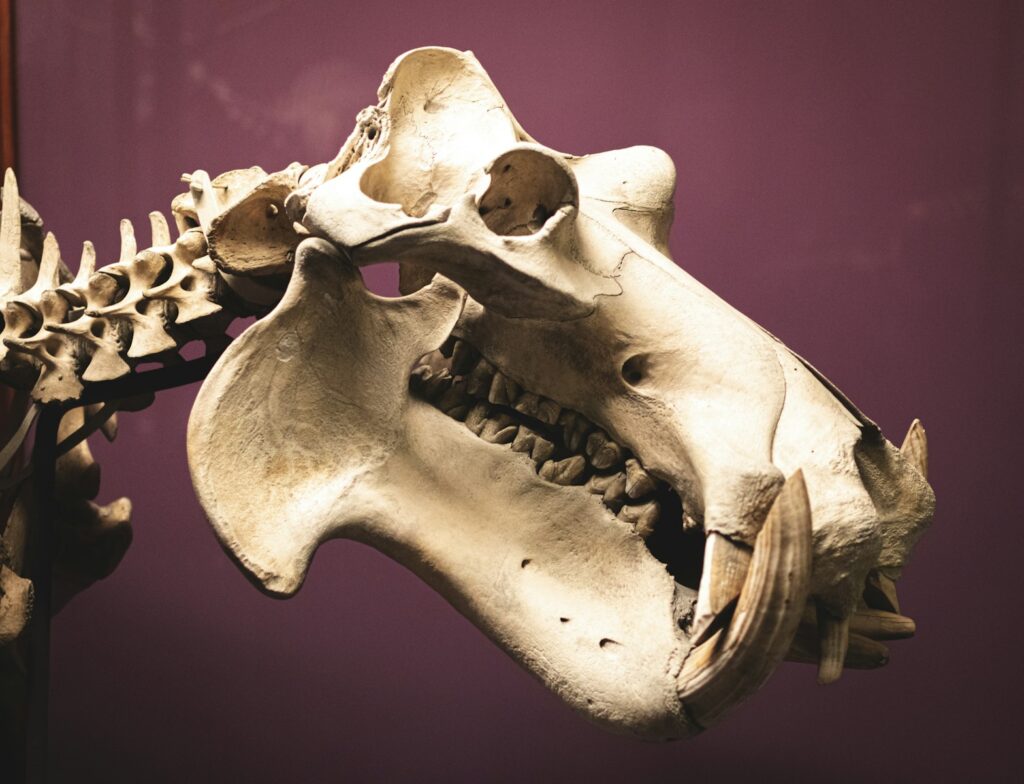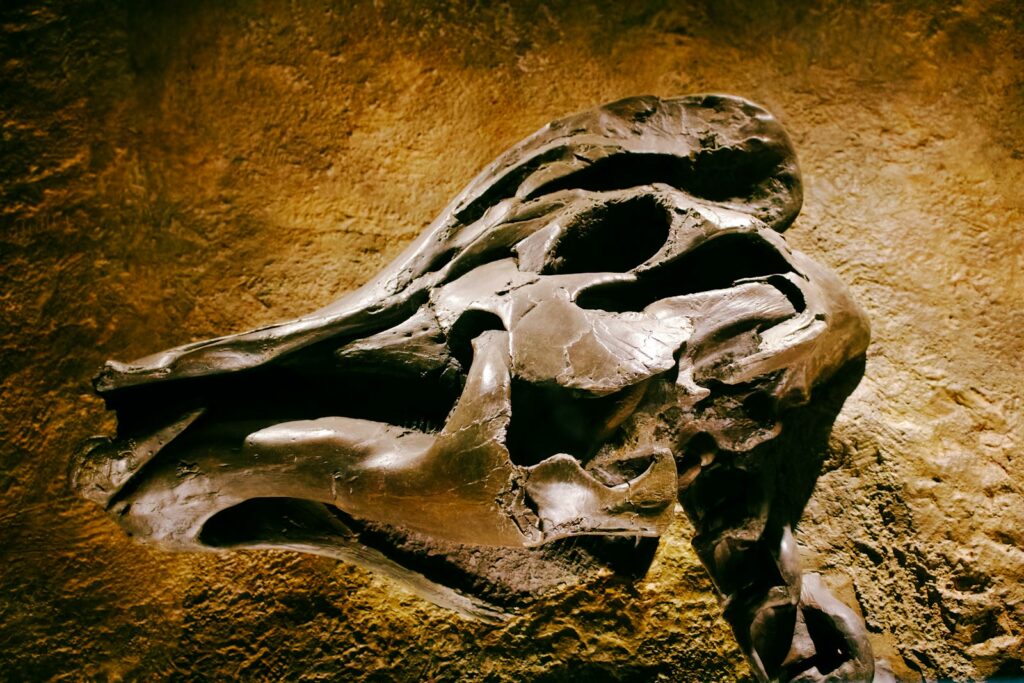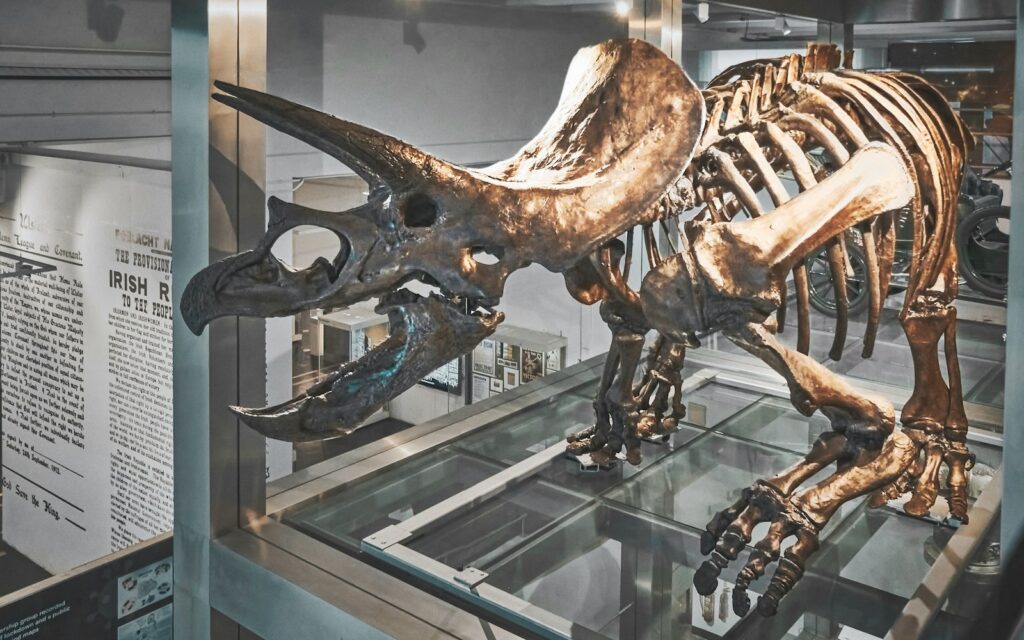Fossil preparation laboratories are the hidden workshops where ancient remains transform from dusty rocks into scientific treasures that reveal Earth’s distant past. Within these specialized spaces, skilled technicians and paleontologists work meticulously to free fossils from their stony prisons and reconstruct creatures that lived millions of years ago. These labs represent the crucial intermediate stage between fieldwork discoveries and museum displays or scientific analysis. Through a combination of traditional craftsmanship and cutting-edge technology, fossil preparation labs bring the past to life, one careful brush stroke at a time. The work demands extraordinary patience, steady hands, and specialized knowledge spanning geology, anatomy, and preservation techniques. Let’s step inside these remarkable workshops to discover how fossils move from the field to scientific study and public display.
The Journey from Field to Lab

Before a fossil ever reaches the preparation laboratory, it undergoes a carefully planned extraction process in the field. Paleontologists locate promising specimens through surface prospecting or targeted excavations, often identifying just small fragments protruding from rock layers. Once discovered, the fossil and surrounding matrix (the rock encasing the specimen) are documented with photographs, measurements, and precise geographic and geological context information. Field teams then apply protective jackets made of plaster-soaked burlap strips to create a protective shell around larger specimens. These jackets prevent fragmentation during transport and preserve the exact position of bones and associated material. The fossils, now encased in their protective shells, travel via truck, helicopter, or even pack animals to reach research facilities where laboratory work can begin. This journey from discovery site to preparation bench can span thousands of miles and requires meticulous planning to avoid damaging these irreplaceable scientific resources.
The Specialized Environment of Preparation Labs

Fossil preparation laboratories are designed with specialized equipment and safety features that support the delicate work of freeing fossils from rock. The physical space typically includes ventilation systems to remove airborne rock dust and chemical fumes that can be hazardous to breathe. Strong, directional lighting illuminates tiny details while minimizing shadows that might obscure important features. Work surfaces must be sturdy enough to support heavy specimens yet clean enough to prevent contamination or loss of minute fragments. Vibration-damping tables prevent accidental damage during mechanical preparation. Storage systems within the lab keep specimens organized according to field numbers and project designations, maintaining the crucial connection between each fossil and its contextual information. Many modern labs also incorporate digital documentation stations with high-resolution cameras and microscopes connected to computer systems for immediate documentation during the preparation process. This environmental design creates the optimal conditions for the precision work that fossil preparation demands.
The Essential Tools of the Trade

Fossil preparators rely on an impressive array of specialized tools that range from industrial equipment to instruments that resemble dental implements. Air scribes, which function as miniature jackhammers, use compressed air to power needle-like tips that carefully chip away matrix rock without damaging the fossil inside. Dental picks and fine brushes allow for precision work around delicate structures. Microscopes provide the magnification necessary for working on minuscule specimens or fine details. Consolidants and adhesives, carefully selected for long-term stability and reversibility, strengthen fragile fossils and repair breaks. Safety equipment, including dust masks, eye protection, and a ventilation system, protects preparators from rock dust and chemical exposure. In some advanced labs, micro-sandblasters use fine abrasive powders to remove matrix with exceptional control. Traditional tools like hammers and chisels still play important roles in preliminary preparation stages. Each tool serves a specific purpose in the preparator’s arsenal, and knowing which implement to use for each preparation challenge comes with experience and training.
The Science and Art of Matrix Removal

Removing the surrounding rock matrix from a fossil represents a delicate balance between science and artistry. Preparators must first assess the type of rock containing the fossil, as different matrices require different approaches—sandstone, shale, limestone, and other sedimentary rocks each present unique challenges. The contrast between fossil and matrix often guides tool selection; greater contrast allows for more efficient mechanical preparation, while similar coloration demands slower, more cautious work. Preparators typically begin with the exposed portions of a specimen, gradually working inward to reveal more of the fossil while continuously evaluating the structural integrity of the specimen. This methodical process sometimes reveals unexpected elements, such as additional bones or preserved soft tissues that weren’t visible during the initial assessment. In cases where the fossil is more durable than the surrounding rock, preparators may use gentle abrasion techniques, while more delicate specimens might require chemical preparation using acids to dissolve the matrix while leaving the fossil intact. The goal remains consistent: to expose the maximum scientific information while ensuring the long-term preservation of the specimen.
Chemical Preparation Techniques

Chemical preparation serves as a powerful alternative when mechanical methods prove too risky for delicate fossils. Acids of carefully controlled concentration can dissolve limestone and other carbonate rocks while leaving phosphatic fossil material like bones and teeth unharmed. Acetic acid (vinegar’s active component) in scientific-grade concentrations works well for many applications, while stronger formic acid might be employed for more resistant matrices. The process typically involves brief acid baths followed by thorough neutralization and rinsing to halt the chemical reaction. Before chemical preparation begins, preparators apply protective consolidants to the fossil itself, creating a barrier that shields it from acid damage. This technique proves particularly valuable for extracting microfossils or specimens with extremely fine details that mechanical preparation might destroy. Further refinements include acid transfer methods, where fossils embedded in soluble rock slowly emerge as the matrix dissolves, revealing exquisite three-dimensional preservation otherwise impossible to achieve. Chemical preparation demands extensive training, as miscalculations in concentration or timing can irreversibly damage specimens.
Microscopic Preparation and Tiny Treasures

Some of paleontology’s most significant discoveries come in miniature packages, requiring specialized microscopic preparation techniques. Preparators working on microvertebrates, small invertebrate fossils, or plant remains often perform their work entirely under microscope magnification, using tools that appear impossibly tiny to the naked eye. These specialists might employ fine insect pins mounted in handles, micro-air scribes with tips thinner than a human hair, or even laser ablation systems for the most delicate work. Microfossil preparation frequently involves screen-washing techniques, where matrix is gently disaggregated in water, then filtered through screens to capture tiny specimens like mammal teeth or fish scales that would be overlooked in traditional preparation. The rewards of this painstaking work include discovering transitional evolutionary forms, juvenile specimens that illuminate growth patterns, or entirely new species too small to have been noticed during field collection. Microscopic preparation also reveals fine details of larger specimens, such as surface textures that indicate soft tissue structures, growth lines, or evidence of pathologies and healing that contribute valuable biological information.
Fossil Reconstruction: Puzzling Together the Past

Once preparation reveals individual bone elements, the challenging work of reconstruction begins—essentially solving three-dimensional puzzles with many missing pieces. Preparators carefully identify each fragment’s anatomical position by comparing it with related species or previously described specimens of the same kind. They must determine which breaks occurred during fossilization or excavation (and thus should be repaired) versus natural separation of bones that should remain distinct. Adhesives used in reconstruction must meet conservation standards for long-term stability, reversibility, and minimal visual interference. For museum displays or research needing complete skeletons, missing elements may be modeled through mirror-imaging preserved counterparts from the opposite side, 3D printing based on related species, or sculpting replicas based on anatomical research. The reconstruction process reveals critical information about body proportions, posture, and functional anatomy that isolated bones cannot provide. This stage requires deep knowledge of comparative anatomy and biomechanics to ensure accurate representations of extinct organisms, especially when working with previously unknown species with no modern analogues.
Digital Technologies Revolutionizing Preparation

Advanced digital technologies have transformed fossil preparation laboratories in recent years, adding powerful new tools to the preparator’s traditional toolkit. CT (computed tomography) scanning allows scientists to visualize fossils still embedded in matrix, guiding preparation decisions or even eliminating the need for physical preparation in some cases. Digital microscopy with image-stacking capabilities provides unprecedented detail and depth of field for documentation during each preparation stage. Photogrammetry creates high-resolution 3D models of specimens before, during, and after preparation, preserving information about original context and enabling virtual study. Laser scanning technology captures surface morphology with sub-millimeter precision. These digital tools not only enhance preparation quality but also democratize access to specimens through virtual collections that researchers worldwide can study without traveling to museum collections. For particularly rare or fragile specimens, digital preparation—manipulating 3D scan data rather than the physical specimen—allows exploration of multiple preparation approaches without risking the original material. The integration of these technologies represents one of the most significant advances in paleontological methods since the field’s inception.
Conservation Considerations in Fossil Preparation

Modern fossil preparation incorporates conservation principles that ensure specimens remain stable and accessible for future research. Preparators must balance the immediate scientific need to expose morphological details against long-term preservation concerns. All materials applied to fossils—consolidants, adhesives, and fillers—undergo rigorous testing for aging properties, reversibility, and compatibility with the fossil material. Documentation of each chemical and technique used becomes part of the specimen’s permanent record, guiding future conservation treatments. Environmental factors within storage facilities, such as temperature, humidity, and light exposure, are carefully monitored to prevent deterioration of prepared specimens. Special consideration applies to pyritized fossils prone to “pyrite disease,” a destructive oxidation process requiring specialized storage conditions. The preparation lab’s responsibility extends far beyond the initial cleaning to include developing customized storage supports, handling protocols, and monitoring schedules that protect the specimen throughout its scientific life. This conservation-minded approach recognizes fossils as non-renewable scientific resources deserving the highest standard of care.
Training the Next Generation of Preparators

Becoming a skilled fossil preparator requires specialized training that combines theoretical knowledge with extensive hands-on practice. While some preparators come from academic backgrounds in paleontology or geology, others develop from artistic fields or technical trades. Formal training programs remain relatively rare, with many institutions relying on apprenticeship models where experienced practitioners mentor newcomers through increasingly complex projects. Aspiring preparators typically begin with sturdy specimens requiring basic preparation before advancing to more delicate material. They develop manual dexterity, patience, and the ability to anticipate how fossils might respond to different preparation approaches. Professional organizations like the Association for Materials and Methods in Paleontology offer workshops and best practice guidelines for preparators at all career stages. The field increasingly recognizes preparation as a professional discipline requiring both technical proficiency and theoretical understanding of geological processes, taphonomy (how organisms become fossils), and conservation science. As digital technologies expand preparation possibilities, preparators must continually update their skills while maintaining traditional techniques that remain irreplaceable for many specimens.
Public Access and Educational Outreach

Many modern fossil preparation laboratories include viewing areas or windows that allow museum visitors to witness the preparation process firsthand. These visible labs transform a behind-the-scenes technical activity into a compelling educational experience that demonstrates how paleontological discoveries progress from raw field specimens to scientific understanding. Preparators often serve as public-facing representatives who translate complex technical work into accessible explanations for visitors of all ages. Some institutions offer preparation workshops where participants can experience simplified versions of professional techniques under expert guidance. School programs featuring preparation demonstrations effectively illustrate scientific methods and the patience required for paleontological research. Live-streamed preparation sessions extend this outreach globally, allowing online audiences to follow the gradual revelation of important specimens and ask questions in real-time. These educational initiatives not only build public support for paleontological research but also inspire future generations of scientists and preparators who might otherwise never have discovered this specialized field.
Notable Discoveries Made During Preparation

The preparation laboratory often becomes the site of scientific discoveries that field collection alone could not reveal. When Sue the Tyrannosaurus rex underwent preparation at Chicago’s Field Museum, preparators discovered previously unknown small forelimb bones that contributed valuable information about this iconic dinosaur’s anatomy. During the preparation of the small theropod dinosaur Microraptor from China, technicians revealed exquisitely preserved feather impressions that revolutionized our understanding of dinosaur-bird evolutionary connections. The preparation of Archaeopteryx specimens has repeatedly revealed minute details of feather structure visible only after matrix removal under microscopic conditions. Fossil preparator Jane Davidson made headlines when her careful work revealed a dinosaur embryo still curled within its egg, providing unprecedented insights into dinosaur development. These laboratory discoveries highlight why preparation requires scientific knowledge rather than merely technical skill—preparators must recognize unexpected features that might represent new anatomical structures or preserved soft tissues. The laboratory thus functions not merely as a cleaning facility but as a genuine research space where new knowledge emerges through the interaction between skilled preparators and the fossils they meticulously reveal.
Ethical Considerations in Fossil Preparation

The preparation laboratory operates within an ethical framework that recognizes fossils as scientific and cultural heritage deserving of respectful treatment. Responsible preparation prioritizes scientific information over aesthetic appeal, avoiding shortcuts that might create visually impressive specimens at the expense of morphological details or contextual data. Preparators face ethical decisions about how extensively to prepare specimens, recognizing that even the matrix surrounding a fossil may contain valuable data about the ancient environment. Commercial fossil preparation presents particular ethical challenges when market pressures encourage rapid work or reconstructions that improve sale value without scientific accuracy. Professional preparators typically adhere to codes of ethics that prioritize accurate documentation, reversible techniques, and preservation of scientific integrity. Indigenous perspectives on fossil preparation and display receive increasing consideration, especially regarding human remains or culturally significant animal species. Ethical preparation also involves appropriate attribution of preparator contributions in scientific publications, acknowledging that skillful preparation directly enables research outcomes. As fossils gain commercial value, preparation labs in museums and universities serve as essential ethical counterweights to market-driven preparation practices.
Conclusion

Fossil preparation laboratories represent the crucial intersection of science, art, and conservation that brings ancient life into modern understanding. These specialized spaces transform raw field discoveries into research-ready specimens through meticulous processes that often take months or even years to complete. The skilled professionals who perform this work combine traditional craftsmanship with advancing technology to reveal paleontological treasures while ensuring their preservation for future generations. As both scientific resources and objects of public fascination, prepared fossils connect us viscerally with Earth’s deep history. The preparation laboratory thus serves not merely as a technical workshop but as a gateway through which ancient organisms enter our scientific knowledge and cultural awareness. Behind every fossil displayed in a museum or described in research stands the unseen but essential work of preparation laboratories and the dedicated specialists who reveal the remnants of lost worlds, one careful stroke at a time.




